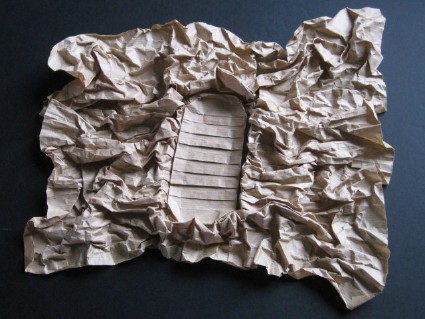
 | Welcome on MOOC-invitation |
|
| New! | An invitation to practice origami | map | Discovery of the world of folding paper Some major topics of folding paper |
| Back MOOC1 | Journey 2 | Sequence 3 | <--- page 7 | page 8 | page 9---> |
 |
Tesselations |
| The tessellation field is certainly one of the most fascinating in the world of paper folding. The first known tesselations were created by Shuzo Fujimoto and Yoshihide Momotani. Today some origamists plow this field and produce remarkable works. By definition, a tiling is the overlapping of a 2D space by repetitive patterns (also called tesserae). Intensively studied by mathematicians, there are several families of tesselations, including tilings by translation, without rotations or symmetries. Folding a tesselation in a sheet of paper is a kind of miracle. Without cutting or gluing, a pattern (or molecule) is repeated as many times as possible, the number of repetitions depending on the complexity of the pattern (what paper size is needed), the size of the sheet and the chosen grid. There are orthogonal grids (lines parallel to the edges of a square or rectangular sheet) and hexagonal grids (lines parallel to the edges of a hexagonal sheet). Alessandro Beber specializes in the use of dodecagonal grids, making tesselations of incredible complexity but also very beautiful! The making of a tesselation is done in several times: - folding of the grid, - marking of the elements of the tesselation (this amounts to tracing the crease pattern of the tesselation), - pre-folding, essential when the folds are not worn by the grid, - folding itself. All this takes a lot of time, and can seem daunting. Some artists, such as Robert J. Lang use a laser pre-marking, which ensures the accuracy and speed of the creation phase of the grid. An example is photographed at the bottom of this page. The folding phase can be simple when the patterns can be folded one after the other, independently of one another. But it is sometimes very difficult when it is necessary to shape little by little the whole set of patterns, the final tesselation then resulting from what looks like a collapse of the structure, more precisely an engagement of all the folds. The most difficult tesselations to fold are not necessarily those whose visual appearance is the simplest! The photos on this page correspond, with one exception, to folds obtained on orthogonal grids. Folding photos on hexagonal grids are present in the pages of the « Journey in pictures » devoted to tesselations. The main trends today revolve around the irregularity of the patterns or their layout, making it possible to break with the geometric side of the tessellations. |
17 photo(s)